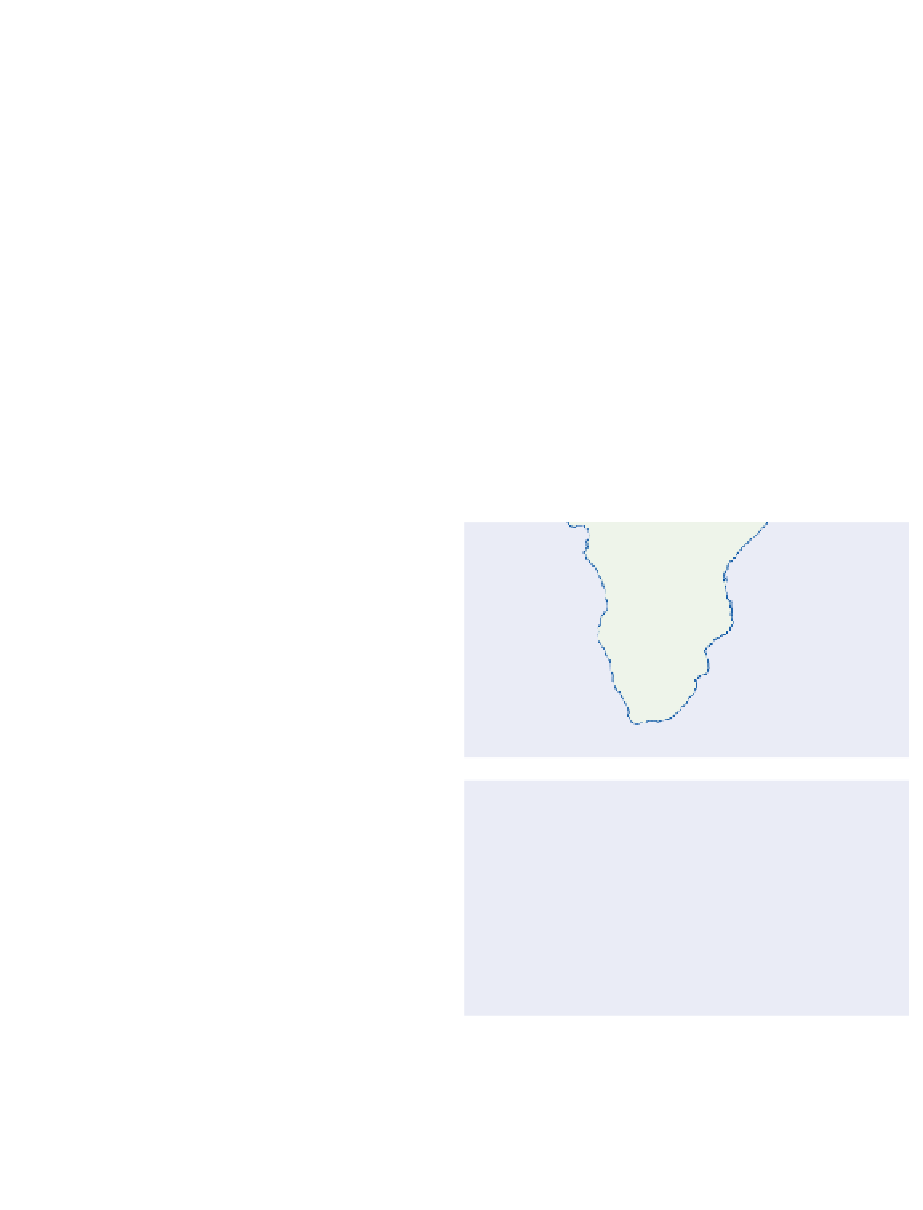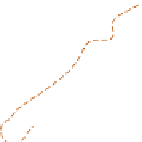Geoscience Reference
In-Depth Information
northeasterly winds in January to April skim off
the surface waters, causing cooler (20
cell. Whereas the 7-13° longitudinal shift of the
South Atlantic cell has relatively little effect, the
westward movement of 24-30° during the
southern winter by the Indian Ocean cell brings
an easterly flow at all levels to most of southern
Africa. The seasonal airflows and convergence
zones are shown in
Figure 11.45
.
In summer (i.e., January) low-level westerlies
over Angola and Zaire meet the northeast
monsoon of East Africa along the Intertropical
Convergence Zone (ITCZ), which extends east as
the boundary between the recurved (westerly)
winds from the Indian Ocean and the deep
tropical easterlies further south. To the west, these
easterlies impinge on the Atlantic westerlies along
the Zaire Air Boundary (ZAB). The ZAB is subject
to daily fluctuations and low pressure systems
C) water to
rise, dramatically lowering the temperature of the
afternoon onshore breezes. The second area of
cool ocean (19-22
°
C) is located along the central-
southern coast west of Lagos during the period
July to October, for a reason that is as yet unclear.
From July to September, an anomalously dry land
area is located along the southern coastal belt (see
Figure 11.41
) during what is termed the Little Dry
Season. The reason is that at this time the
Monsoon Trough is in its most northerly position.
The coastal zone, lying 1200-1500km to the south
of it and, more important, 400-500km to the
south of its major rain belt, has relatively stable air
(see
Figure 11.40B
), a condition assisted by the
relatively cool offshore coastal waters. Embedded
within this relatively cloudy but dry belt is the
smaller Togo Gap, between 0° and 3°E and during
the summer having above-average sunshine,
subdued convection, relatively low rainfall (i.e.,
less than 1000mm) and low thunderstorm
activity. The trend of the coast here parallels the
dominant low-level southwesterly winds, so
limiting surface frictionally induced convergence
in an area where temperatures and convection are
in any case inhibited by low coastal water
temperatures.
°
(
A)
0°
10°
1010
1012
1010
20°
H
1012
1016
1020
H
30°
H
1016
40°S
20°W
60°
80°E
0°
20°
40°
2 Southern Africa
Southern Africa lies between the South Atlantic
and Indian Ocean subtropical high pressure cells
in a region subject to the interaction of tropical
easterly and extra-tropical westerly airflows. Both
of these high pressure cells shift west and intensify
(see
Figure 7.10
) in the southern winter. Because
the South Atlantic cell always extends 3
(
B)
0°
1016
10°
1012
1020
1016
1016
1020
20°
1020
H
30°
1024
1024
H
latitude
further north than the Indian Ocean cell, it brings
low-level westerlies to Angola and Zaire at
all seasons and high-level westerlies to central
Angola in the southern summer. The seasonal
longitudinal shifts of the subtropical high pressure
cells are especially significant to the climate of
southern Africa in respect of the Indian Ocean
°
1020
1020
1020
40°S
20°W
0°
20°
40°
60°
80°E
Figure 11.45
Airflow over southern Africa during January (A)
and July (B), together with the locations of the Intertropical
Convergence Zone (ITCZ), the Zaire Air Boundary (ZAB) and
the major surface low pressure troughs.
Source: After Van Heerden and Taljaard (1988). Courtesy of the American
Meteorological Society.











































































































































































































































































































































































